The kaffir lime tree is a gorgeous, small citrus plant native to Southeast Asia. Its leaves and bumpy-looking lime fruit are commonly used in Asian cuisine for their intense citrusy smell and flavor.
Kaffir lime trees (Citrus hystrix) can be grown both indoors and outdoors. Their care requirements are not stringent, and they’re not prone to pests or diseases. Kaffir lime trees fare better in sunny areas with moderate humidity (USDA Zones 9 – 10) and no winter frosts.
In this post, I’ll take you through everything you need to know about growing and looking after kaffir lime trees.
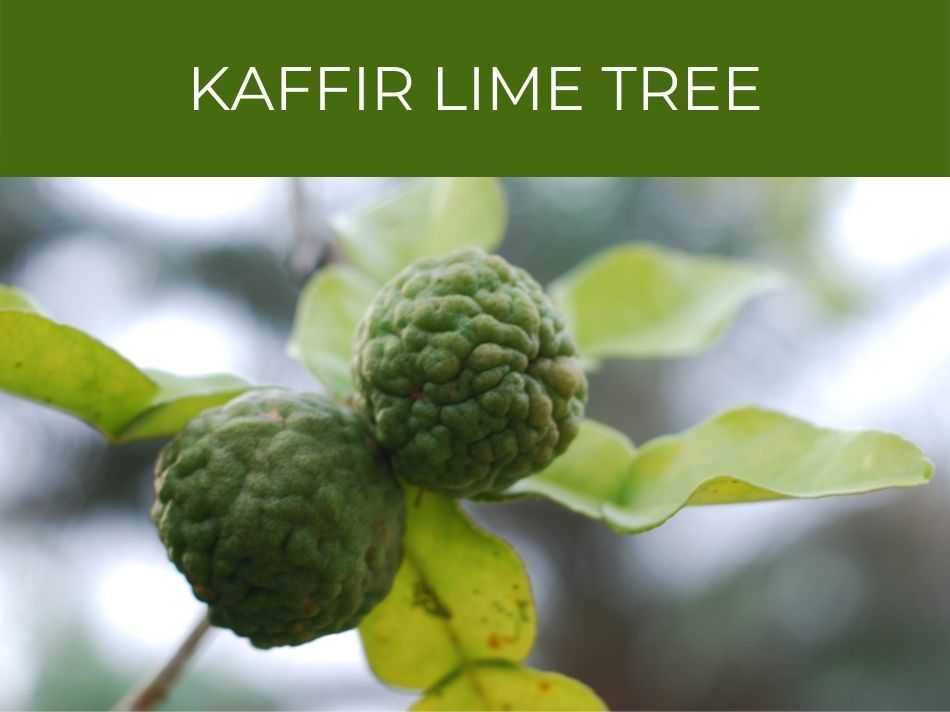
Kaffir lime tree
Native to Southeast Asia, kaffir lime trees have bumpy fruit, and are generally small citrus trees.
The name “kaffir” most likely originated from the name for Bantu people from southern Africa, as Arab traders brought these lime trees back from Southeast Asia. The notion that “kaffir” is related to the South African derogatory term appears unfounded.
Also referred to as Makrut limes or Thai limes, these plants have become exceptionally popular worldwide because they’re so easy to grow and care for.
Kaffir lime trees tend to be small & slow-growing, so are ideal for indoor citrus growers.
If you’re looking for an attractive but small citrus for your home or garden, this is the plant for you.
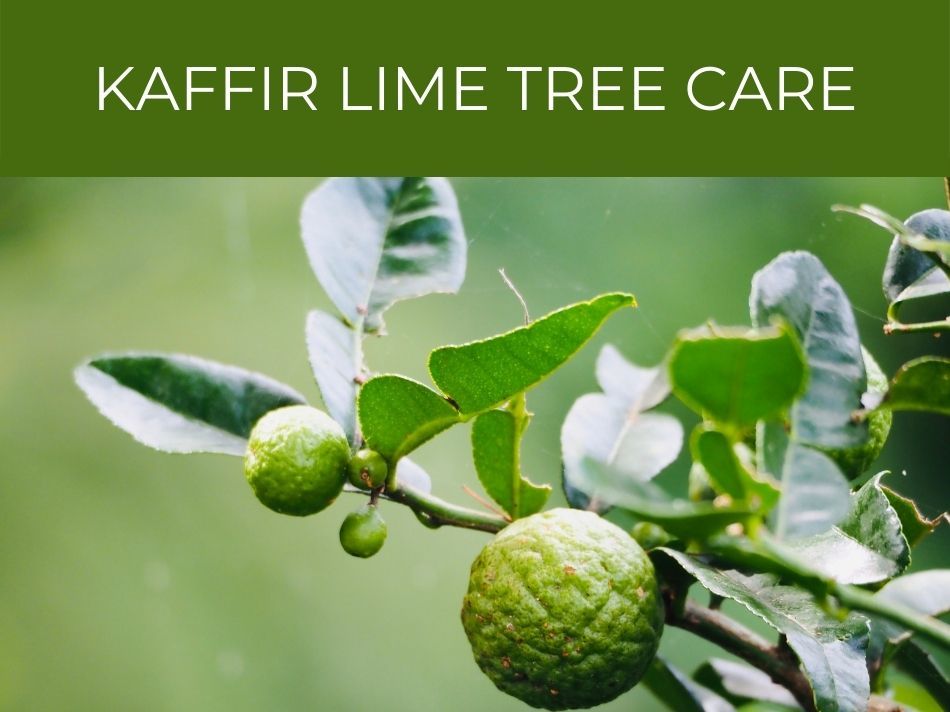
Kaffir lime tree care
If you’re a long-time citrus grower, you’ll know that they’re not difficult plants to manage. The same is true for the kaffir lime, which has similar requirements like other indoor citrus trees.
With consistent care and good growing conditions, your tree will be thriving in no time.
Outdoor kaffir limes should be planted in well-draining soil, and in areas that receive plenty of full sunlight.
While they enjoy quite a bit of water, they may suffer root rot if left standing in damp soil for too long.
If you have odd-smelling soil, check out our complete article on the causes & fixes for foul-smelling soil.
To prevent root rot, allow the top layer of soil to dry out from time to time.
If you live in an area prone to very harsh winters or frost, you may need to move your kaffir limes indoors as they are not particularly cold tolerant.
Indoors, kaffir limes really thrive.
To care for your indoor plant, keep it near a sunny window.
Opt for east-facing, if possible, to avoid the strong afternoon sun.
See our general article on caring for lime trees.
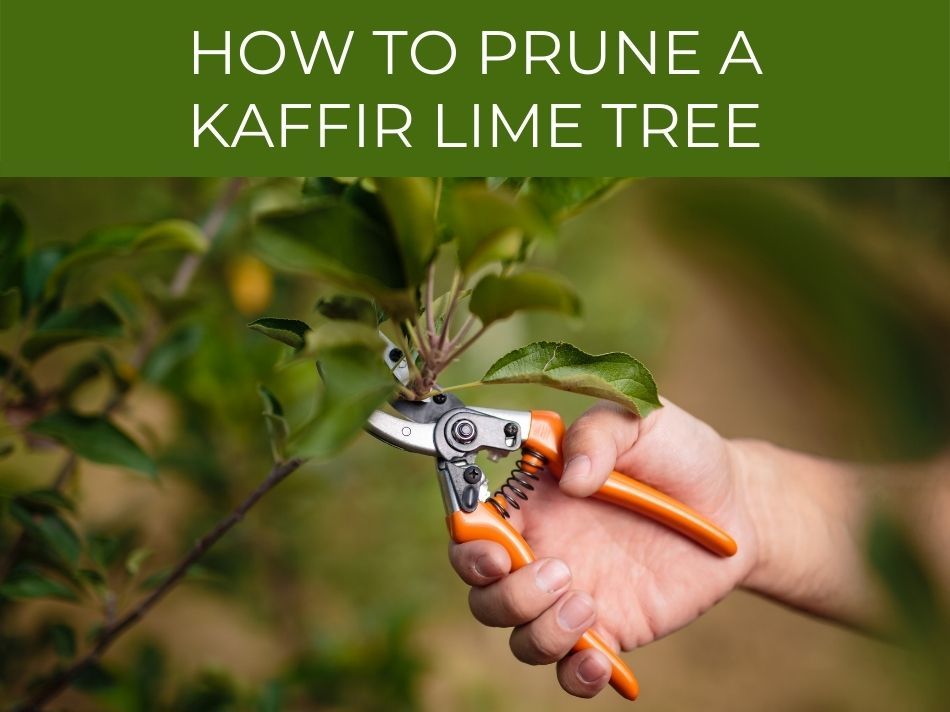
How to prune a kaffir lime tree
Pruning your kaffir lime tree is essential for keeping it happy and healthy.
It serves the dual purpose of maintaining its shape and stature and removing dead wood for better fruit production.
Before commencing your pruning regime, make sure your tools are clean and sterilized to prevent spreading diseases or infections.
Then, start by sawing or clipping away any dead or diseased areas of the tree.
This includes branches that may have died between seasons and leaves or stems that have discolored or turned spotty.
Next, you’ll start shaping your tree.
Cut back branches to achieve your desired shape, however, be careful not to prune too voraciously (no more than 30% of the total size), as this can cause plant shock.
Pruning aids fruit production and improves air circulation between branches and leaves.
When cutting, always make sure to cut outwards at a 45-degree angle and use sharp tools.
Once the shaping is complete, you can finish pruning your kaffir lime by removing overlapping branches, working from the tree’s branch collar outward.
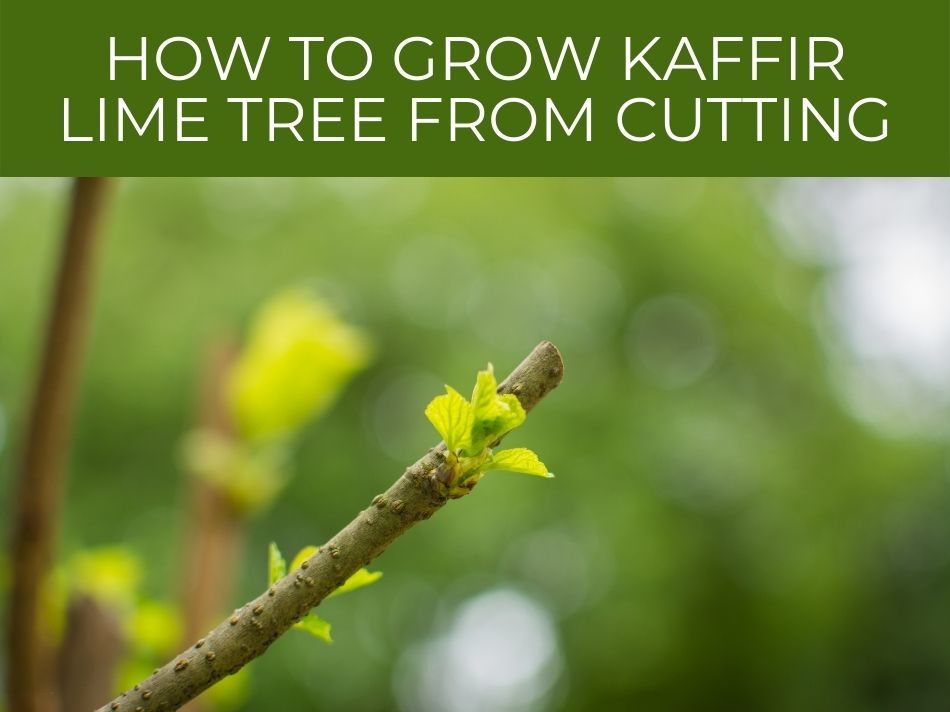
How to grow kaffir lime tree from cutting
The best way to propagate a kaffir lime tree is to grow a sapling from a cutting.
It’s far easier than trying to grow them from seeds.
To grow from a cutting, you’ll need to start by finding a thriving, healthy tree.
Clip off a stem that is 4 to 5 inches (10 to 12 centimeters) in length and bears no fruit or flowers.
Next, remove all the leaves barring two or three at the top end of your cutting.
Prepare a pot with good-quality, well-draining soil, and dip your cutting into a rooting medium before submerging it halfway into the potted ground.
Pat down the soil around the cutting firmly and water it.
Cover it with a plastic bag to lock in humidity and keep it out of direct sunlight to offer your cutting its best chance of success.
Feel how moist the soil is every few days and add water as needed.
Curious if plants can grow without water: check out this strange article to see which plants can grow without water.

How to plant a kaffir lime tree
Once you’ve purchased or propagated your kaffir lime tree, you’re ready to plant it.
These resilient beauties can be planted in the garden or a planter or container.
Both planting methods are more or less the same.
Start by measuring the root ball.
You want to create a hole in your soil that is the same depth but twice as wide as the root system.
Before placing your tree in the hole, cut away any dead, tangled, or rotten roots.
When you’ve planted your tree, make sure it can stand on its own and water it thoroughly.
For outdoor kaffir limes, leave a circle of raised soil around the tree’s trunk to capture water that, in turn, will help settle its roots.
Indoor kaffir lime trees should be planted in high-quality potting soil in pots with plenty of drainage holes.
Check out our article on why to use potting soil instead of topsoil.
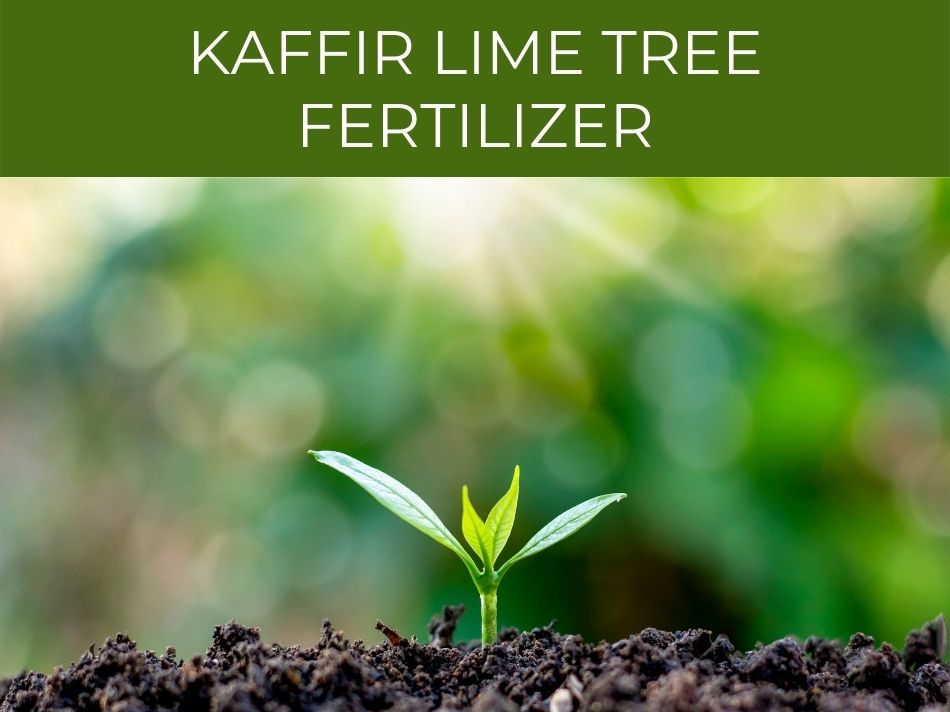
Kaffir lime tree fertilizer
It’s a good idea to feed your kaffir lime tree with fertilizer occasionally to promote growth and fruiting.
Your best bet is to provide it with a high-nitrogen slow-release fertilizer (preferably organic) or manure pellets.
When applying fertilizer, do so a few inches away from the trunk, rake it into the soil, and water your tree so the fertilizer can absorb into the ground.
You can feed your tree 3 times per year – once in the spring and at the beginning and end of the summer.
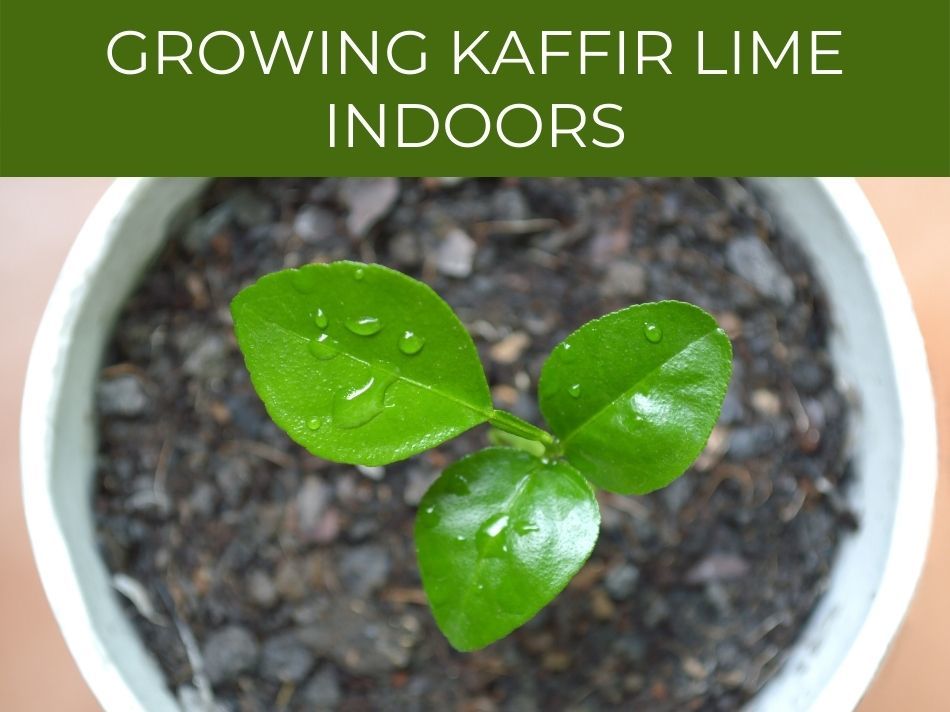
Growing kaffir lime indoors
Growing a kaffir lime tree indoors will not disappoint.
As a smaller citrus, it’s an easy plant to manage and won’t get too huge.
These plants will thrive if placed close to a sunny window where they can receive 6 to 8 hours of light per day.
They need to be watered twice a week in warmer climes and once per week when it cools down.
Try to set them in a relatively humid room, as they simply love a tropical feel.
Indoor kaffir limes need regular pruning to prevent them from losing their shape.
Generally, growing kaffir lime trees indoors is similar to growing other dwarf citrus trees.
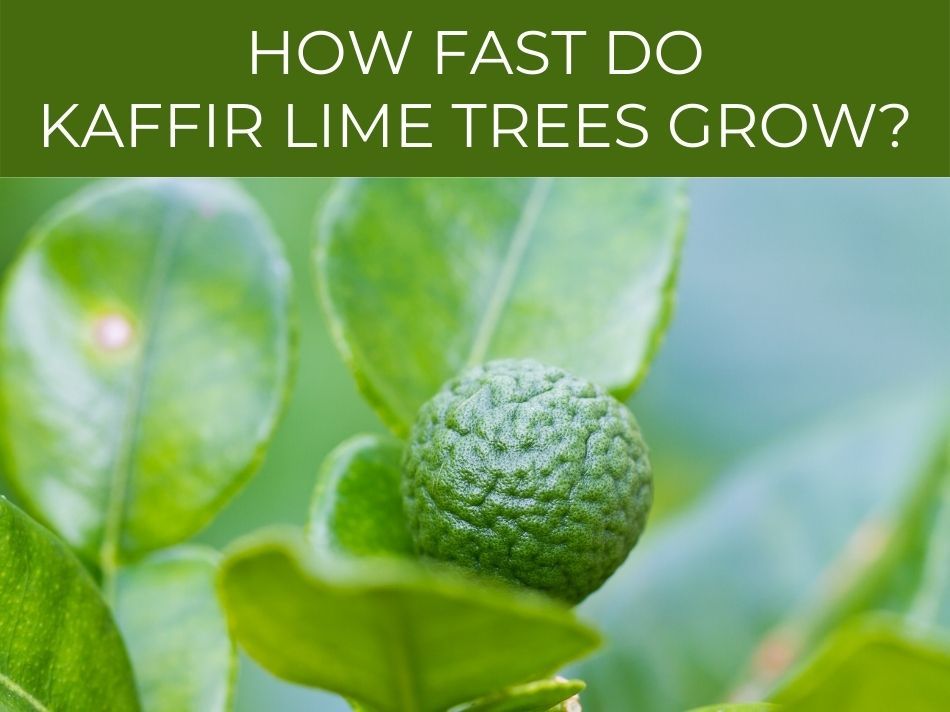
How fast do kaffir lime trees grow?
Kaffir lime trees do not grow especially fast and are considered moderate growers.
From seed, they will germinate in 10 to 15 days.
You’ll wait between 3 to 6 years before seeing any fruit from the sapling stage.
On average, kaffir lime trees grow at a rate of about 13 to 24 inches (30 to 60 centimeters) per year.
Proper care and a decent pruning regiment will maximize their growth speed and overall health.
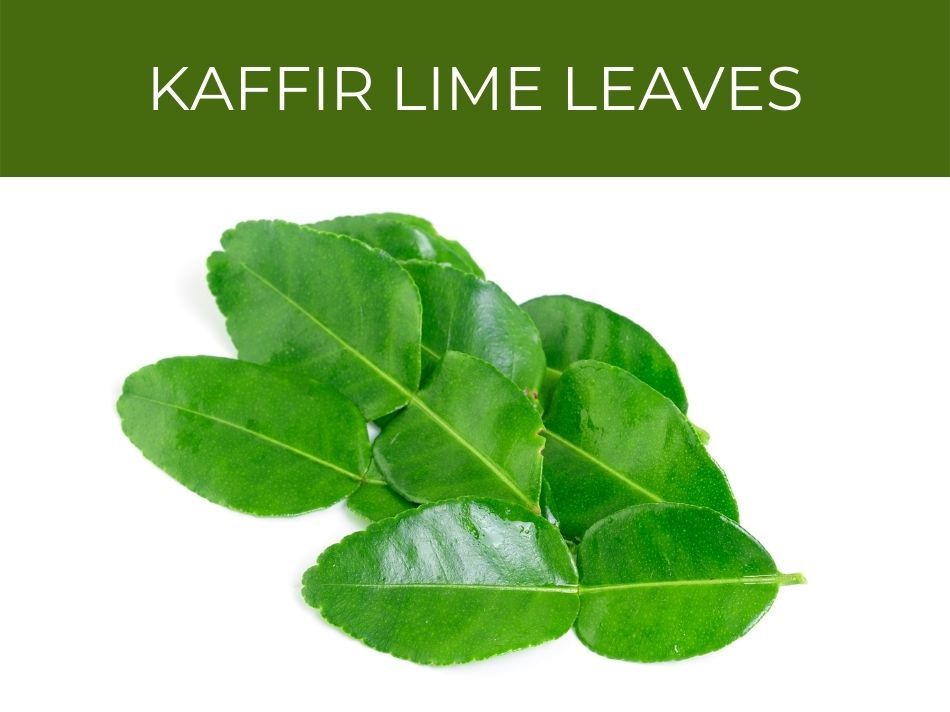
Kaffir lime leaves
When we think of kaffir lime trees, it’s most often because we have an association with the beautiful, striking scent of their leaves.
Dark, elongated, and waxy, their leaves contain exceptional citrus essential oils that are valued in the culinary world for adding taste and scent to curries, salads, and the like.
Kaffir lime leaf extracts are also used in traditional medicines, skincare products, perfume, and cleaning products.
If you’re in a cooking mood, the internet is full of easy and fun recipes that you can try incorporating your leaves or fruit.


